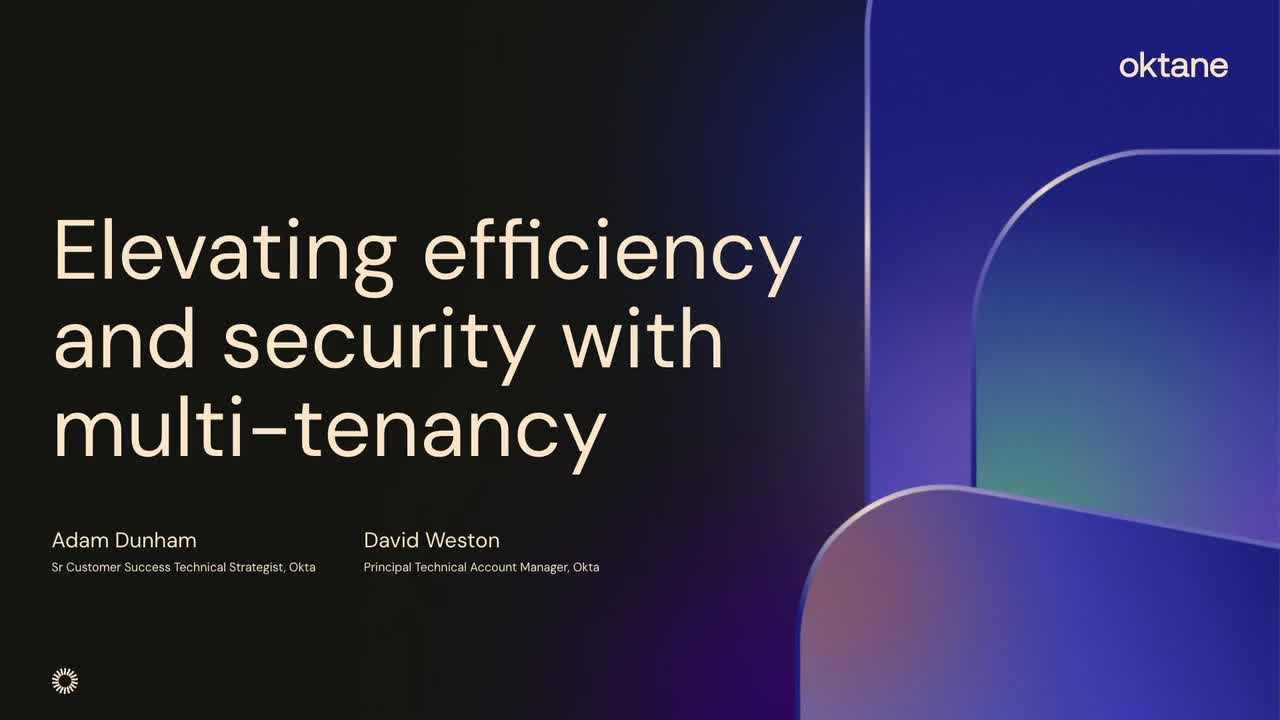Meet the Experts: Elevating efficiency and security with multi-tenancy
Wondering how to most effectively and efficiently architect an Identity solution at your large or otherwise complex organisation? Multi-tenancy could be your answer (for Customer Identity and Workforce Identity use cases).
Two of Okta’s skilled Technical Account Managers, Adam Dunham and David Weston, recently took the stage to speak about “Elevating efficiency and security with multi-tenancy.”
Multi-tenancy is a systematised approach to Identity that best supports companies with data residency challenges, subsidiaries with different technology needs, or otherwise divided workforce and/or customer segments.
The idea of implementing and managing multiple tenants may sound a bit nerve-wracking, but fear not. As we’ll get into, Identity isn’t a one-size-fits-all sport, and Okta’s Customer Success and Technical Account Management Team is composed of experts who help you succeed with your unique use case.
With that, let’s jump into a brief recap of what we learned from David and Adam (and then watch the session recording):
Multi-tenancy with Workforce Identity Cloud
There are two different ways to broadly architect your Workforce Identity solution: centralising resources and user management in a single org or decentralising resources and user management across multiple, integrated Okta orgs. Okta can help organisations through the process of choosing between a single- or a multi-org approach.
Your use case, along with a few other factors like cost, usability of applications, policy complexity, and residency requirements will inform this decision. You should also be aware of certain limitations with single-org architecture that may impact your approach. Adam dives into this in more detail in the video, but here are a few contexts he shared in which a multi-org architecture makes sense.
- When data residency is a requirement
- Where performance/geography is a concern
- If M&A activity is an ongoing factor
(Watch the recording below to see where multi-orgs no longer make the most sense.)
Customer Identity Cloud
Now on to David and his insights on the Customer Identity side of the house. A single tenant within the Customer Identity Cloud contains isolated data but can support many inbound and outbound applications with differing needs. With an Enterprise subscription, you can create multiple tenants depending on the level of isolation you require. By and large, a single production tenant serves most use cases, but in this session, David takes us through some example use cases where a multi-tenant model can be beneficial, such as:
-
Supporting a global marketplace
- Supporting multiple brand facias
- Providing global Identity governance across a very large number of consumer applications with differing requirements
David concludes by looking at B2B SaaS applications, a use case where multi-tenant may no longer be required. The Customer Identity Cloud Organisations feature allows a logical representation of business customers and partners within a single tenant, where each organisation can have its own branding, configuration, and connections for authenticating users.
Learn more by watching the full discussion below.
You can find many of the benefits and value of Okta’s Workforce Identity Cloud hub-and-spoke solution in our Okta for Global 2000 solution bundle, which we deployed to fit a broad set of Okta customer use cases.
These materials and any recommendations within are not legal, privacy, security, compliance, or business advice. These materials are intended for general informational purposes only and may not reflect the most current security, privacy, and legal developments nor all relevant issues. You are responsible for obtaining legal, security, privacy, compliance, or business advice from your own lawyer or other professional advisor and should not rely on the recommendations herein. Okta is not liable to you for any loss or damages that may result from your implementation of any recommendations in these materials. Okta makes no representations, warranties, or other assurances regarding the content of these materials. Information regarding Okta's contractual assurances to its customers can be found at okta.com/agreements.


